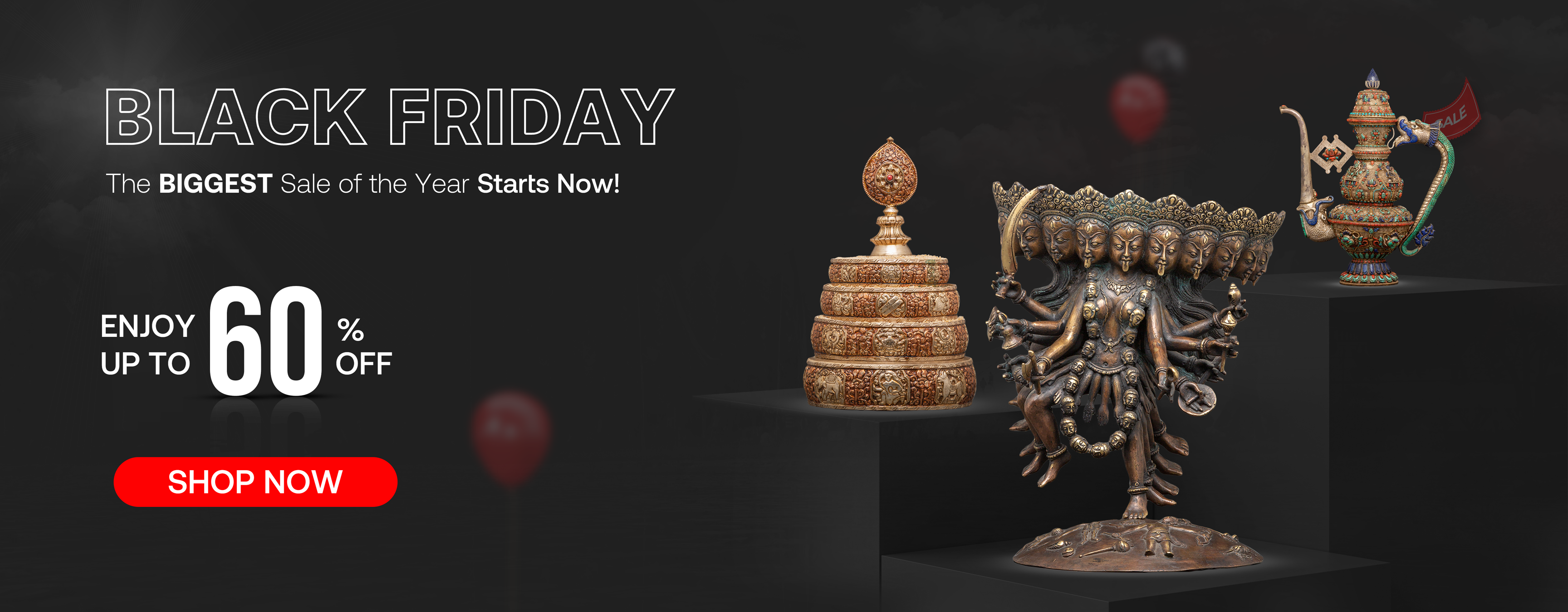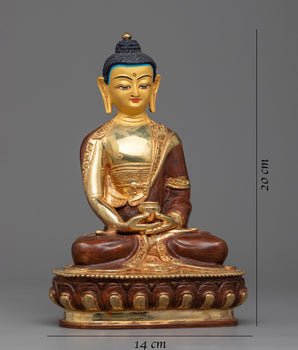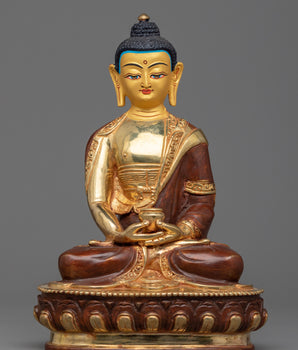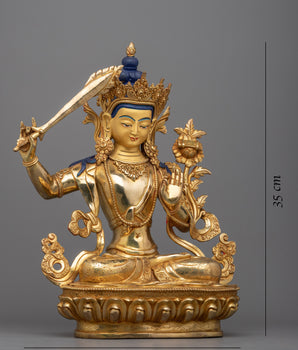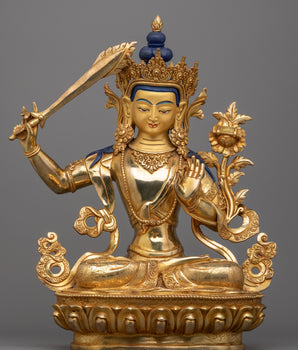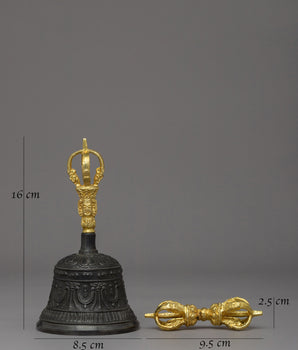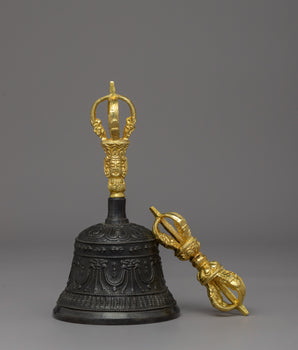Exploring the Symbolism of the Makara in Tibetan Art and Ritual
Among the many mythical beings in Tibetan Buddhism, the Makara holds a unique place. Often depicted as a fantastical sea creature, the Makara symbolizes the union of opposites, protection, and the transformative power of the Dharma. Its hybrid form—part crocodile, part elephant, and part fish—embodies the imagination of Buddhist iconography and the rich symbolism preserved in Himalayan art.
In Robert Beer’s The Handbook of Tibetan Buddhist Symbols, the Makara is described as a creature of paradox and power, bridging the wild energy of the natural world with the spiritual aspirations of Buddhist practice.
What is a Makara?
The Makara originates in Indian mythology, where it was associated with the water god Varuna and the river goddess Ganga. In Buddhist and Hindu traditions, it serves as a guardian of thresholds, appearing on gateways, temple railings, and ritual objects.
In Tibetan Buddhism, the Makara is not a mere sea monster but a mythic composite creature:
-
The head of a crocodile or sea monster, representing ferocity and primal strength.
-
The trunk of an elephant, symbolizing power and wisdom.
-
The scales or tail of a fish, linking it to the watery, subconscious depths of the mind.
-
Sometimes even the hind legs of a lion or peacock, signifying majesty and beauty.
This blending of attributes makes the Makara a chthonic guardian—a being of both land and sea, matter and spirit.
View our Collection of Makara in Arts and Collectibles
The Deeper Symbolism of the Makara
The Makara’s hybrid form is rich with layered meanings:
-
Threshold Guardian – As it often appears at doorways and entrances, the Makara represents the passage from the ordinary to the sacred, from the mundane to the spiritual.
-
Union of Opposites – Its combination of land and sea creatures symbolizes the union of wisdom and compassion, form and emptiness.
-
Transformation of Energy – Just as Vajrayana Buddhism emphasizes transforming afflictive emotions into wisdom, the Makara embodies the transformation of primal energy into spiritual power.
-
Auspiciousness – The Makara is also one of the eight auspicious creatures (Ashtamangala in extended Tibetan sets), representing abundance, fertility, and protection.
The Makara’s fierce, fantastic form reflects how Tibetan Buddhism integrates mythic imagination with spiritual symbolism.
Click here to explore this Makara Statue Set in Details.
Where is the Makara found in Tibetan art?
1. Architectural Guardians
-
Temple Entrances: Makaras often appear carved on door lintels, pillars, or as door handles/knockers. Their role here is as threshold guardians, marking the crossing from the ordinary world into sacred space.
-
Roof Corners & Eaves: Sometimes Makaras are found at roof ends, spouting jewels or water motifs, symbolizing the abundance and flow of spiritual blessings.
2. Ritual Implements
-
Vajras and Bells: The handles of vajras (dorje) or bells may terminate in Makara heads, symbolizing the origin point from which the energy of enlightenment radiates.
-
Phurbas (Ritual Daggers): Makaras can be found at the base or midsection, representing the power to devour or transform obstructive forces.
-
Water Vessels (Ewers): Ritual ewers sometimes have spouts shaped like Makara mouths, pouring out water or nectar that symbolizes purification and blessings.
3. Thangkas and Painted Borders
-
Makaras frequently decorate the borders of mandalas and thangkas. Their hybrid, composite body (crocodile, elephant, fish, peacock, etc.) symbolizes the union of opposites, transformation of primal energies, and auspiciousness.
-
They also appear supporting lotus thrones of Buddhas or Bodhisattvas, emphasizing stability, protection, and fertility.
4. Sculpture and Decorative Motifs
-
Paired Statues: Sometimes placed at gateways or shrines, Makara pairs serve as protectors of sacred ground.
-
Ornamental Borders: Makara heads are woven into textile motifs, jewelry, and reliquary designs, extending their protective function into everyday sacred art.
Makara Motifs in Contemporary Collections
Seeing Makara imagery in real objects brings the symbolism to life. Below are representative pieces from the EvamRatna collection
1. Makara Door Knockers (Pair) — Architecture as threshold
Large copper, gold-plated door knockers modeled as Makara heads. Placed on monastery or home entrances, they literalize the Makara’s gate-keeping role: only auspicious energies pass. This mirrors Beer’s reading of Makara as a guardian at liminal points (doors, roof corners, lintels).
2. Buddhist Ritual Ceremonial Ewer (Dragon Handle, Makara Spout) — Spouting blessings
Liquids poured through the Makara are emblematic of nectar/wisdom flowing into the rite, the “outpouring of blessings” motif often shown as jewels or lotuses issuing from the Makara’s mouth.
3. Phurba with Makara Head — Taming chaotic forces
A ceremonial dagger topped with a Makara. In Tantric context, the phurba subdues obstructive forces; the Makara crown signals that wild, watery energies (naga/serpentine, unconscious) are harnessed.
4. Makara Statues (Pair) — Standalone protectors
A matched pair of sculptural Makaras—immediately recognizable as guardians. Makaras can bracket a sacred zone, akin to how Makara terminals frame toranas and roof corners, marking sacred space.
5. Makara Thangka Prints (Single & Couple) — Union of opposites
Printed works featuring single and intertwined Makaras. The “Makara couple” visualizes the union of opposites—land/sea, strength/grace—resonating with Makara hybridity (crocodile head, fish tail, sometimes elephant trunk or peacock elements).
6. Makara Details in Vajra/Implements — Mouths of the prongs
The outer curved prongs emerge from Makara mouths. This places the Makara at the origin-point of power—the threshold from latent energy to wielded compassion
The Makara, with its composite body and layered meanings, remains one of the most evocative guardians in Tibetan Buddhist art. Far from being just a mythical sea creature, it embodies the union of opposites, the transformative potential of the Dharma, and the blessings of protection and abundance. Whether carved into temple lintels, cast into ritual implements, or painted across thangka borders, the Makara reminds practitioners and admirers alike of the rich symbolic imagination at the heart of Himalayan culture. To encounter the Makara is to cross a threshold—not only into sacred space, but into a deeper awareness of the power of myth to shape spiritual vision.







